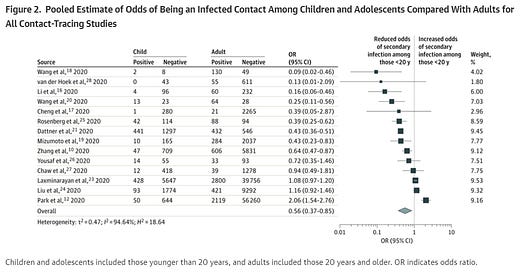11/1—COVID-19 long-haulers
Taking pandemic sequelae seriously: from the Russian influenza to COVID-19 long-haulers
A new category of patients is emerging, colloquially known as COVID-19 “long-haulers”. These patients typically did not need critical care but on social media platforms and in interviews with journalists report “rolling waves of symptoms”, including fatigue, hallucinations, “brain fog”, delirium, memory loss, tachycardia, numbness and tingling, and shortness of breath.
Slovakia to test all adults for SARS-CoV-2
An initial 3-day pilot testing scheme in four regions in the north of the country that have become infection hotspots began on Oct 23, 2020, ahead of mass testing of the rest of the population on the two weekends of Oct 30–Nov 1, and Nov 6–8. [In other news, Taiwan celebrates record 200 days with no local transmission.]
SARS-CoV-2 Infections in the World: An Estimation of the Infected Population and a Measure of How Higher Detection Rates Save Lives
Worldwide, on July 20, it has been estimated above 160 million individuals infected by SARS-CoV-2. Moreover, it is found that only about 1 out of 11 infected individuals are detected. Detecting 5% instead of 35% of the infections is associated with multiplying the number of deaths by a factor of about 6. Using this result, we estimated that 120 days after the pandemic outbreak, if the US would have tested with the same intensity as South Korea, about 85,000 out of their 126,000 reported deaths could have been avoided.
Three Quarters of People with SARS-CoV-2 Infection are Asymptomatic: Analysis of English Household Survey Data
In total, there were 36,061 individuals with a SARS-CoV-2 test between 26 April and 27 June 2020. Of these, 625 (1.7%) reported symptoms on the day of the test. There were 115 (0.32%) with a positive SARS-CoV-2 test result. Of the 115, there were 27 (23.5%) who were symptomatic and 88 (76.5%) who were asymptomatic on the day of the test. COVID-19 symptoms are poor markers of SARS-CoV-2.
Susceptibility to SARS-CoV-2 Infection Among Children and Adolescents Compared With Adults: A Systematic Review and Meta-analysis
A total of 32 studies comprising 41 640 children and adolescents and 268 945 adults met inclusion criteria, including 18 contact-tracing studies and 14 population screening studies. The pooled odds ratio of being an infected contact in children compared with adults was 0.56 (95% CI, 0.37-0.85), with substantial heterogeneity (I2 = 94.6%). Three school-based contact-tracing studies found minimal transmission from child or teacher index cases. There is weak evidence that children and adolescents play a lesser role than adults in transmission of SARS-CoV-2 at a population level.

Get it by email:
Missed an update? View past issues.

